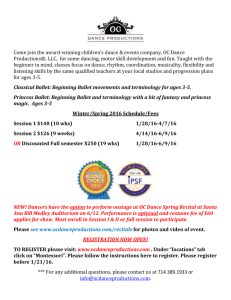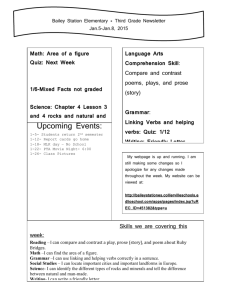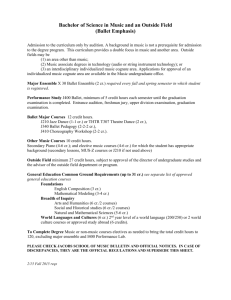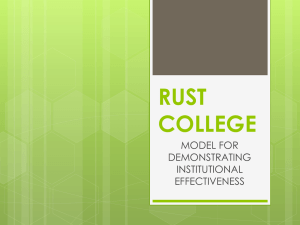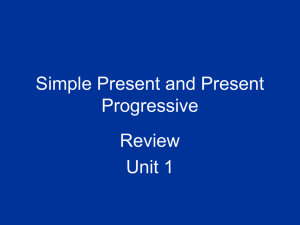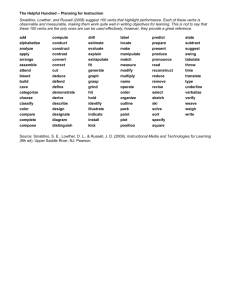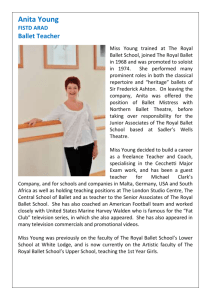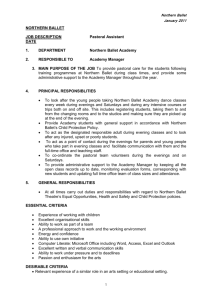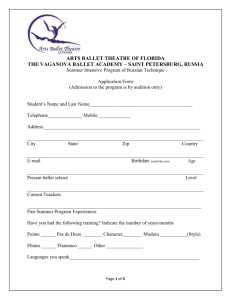Instructions for Writing Student Learning Outcomes for Courses
advertisement
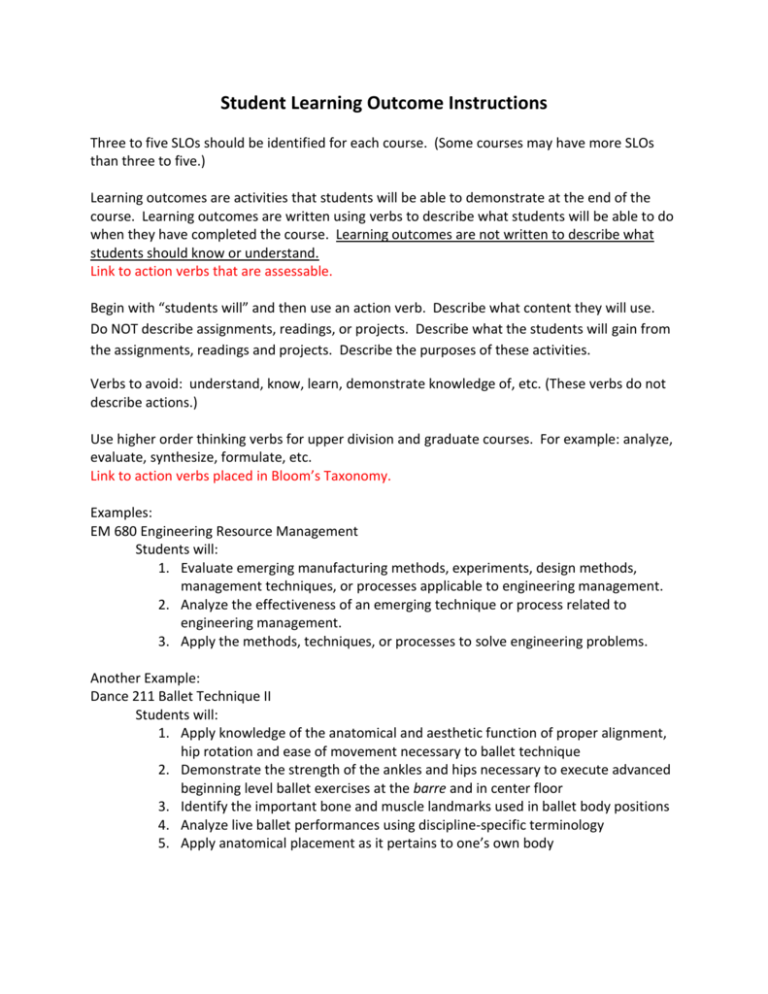
Student Learning Outcome Instructions Three to five SLOs should be identified for each course. (Some courses may have more SLOs than three to five.) Learning outcomes are activities that students will be able to demonstrate at the end of the course. Learning outcomes are written using verbs to describe what students will be able to do when they have completed the course. Learning outcomes are not written to describe what students should know or understand. Link to action verbs that are assessable. Begin with “students will” and then use an action verb. Describe what content they will use. Do NOT describe assignments, readings, or projects. Describe what the students will gain from the assignments, readings and projects. Describe the purposes of these activities. Verbs to avoid: understand, know, learn, demonstrate knowledge of, etc. (These verbs do not describe actions.) Use higher order thinking verbs for upper division and graduate courses. For example: analyze, evaluate, synthesize, formulate, etc. Link to action verbs placed in Bloom’s Taxonomy. Examples: EM 680 Engineering Resource Management Students will: 1. Evaluate emerging manufacturing methods, experiments, design methods, management techniques, or processes applicable to engineering management. 2. Analyze the effectiveness of an emerging technique or process related to engineering management. 3. Apply the methods, techniques, or processes to solve engineering problems. Another Example: Dance 211 Ballet Technique II Students will: 1. Apply knowledge of the anatomical and aesthetic function of proper alignment, hip rotation and ease of movement necessary to ballet technique 2. Demonstrate the strength of the ankles and hips necessary to execute advanced beginning level ballet exercises at the barre and in center floor 3. Identify the important bone and muscle landmarks used in ballet body positions 4. Analyze live ballet performances using discipline-specific terminology 5. Apply anatomical placement as it pertains to one’s own body Another example: ED 406 Classroom Management Students will: 1. identify the potential learning and emotional outcomes of various classroom management and organizational structures, 2. choose from and apply different approaches to classroom management and organization, 3. implement appropriate strategies to address bullying, special needs children, GLBT parents and children and children from diverse ethnic and religious backgrounds within the context of organizing and managing a classroom, 4. select from and apply a variety of strategies for day-to-day management and organizational tasks 5. create classroom organizations that build classroom community, mutual respect. individual responsibility, pro-social behavior, and democratic/ pluralistic values More generic examples: Students will use theories to solve problems. Students will describe historical trends in content area. Students will identify problems and apply appropriate theoretical solutions. WRONG: Students will learn to research in content area. RIGHT: Students will identify research strategies (both print and online) and conduct research for content area. WRONG: Students will demonstrate knowledge of medical terminology. RIGHT: Students will use appropriate medical terminology to describe disease diagnoses.



